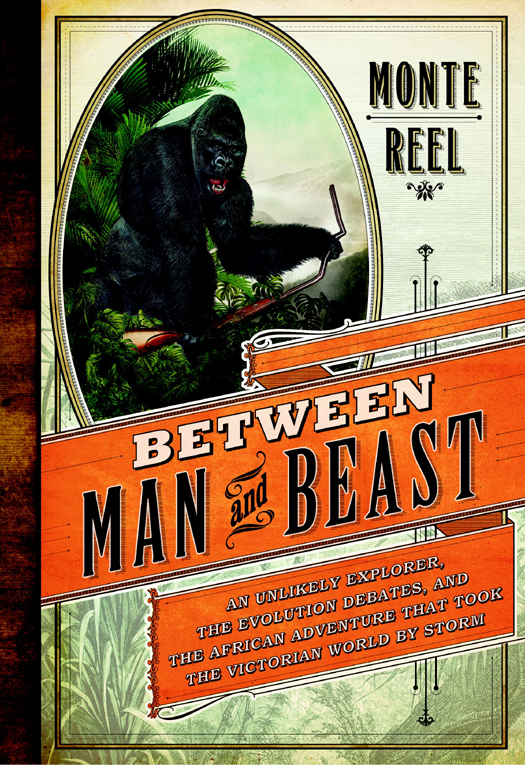
Between Man and Beast
An Unlikely Explorer and the African Adventure the Victorian World by Storm
کتاب های مرتبط
- اطلاعات
- نقد و بررسی
- دیدگاه کاربران
نقد و بررسی

September 3, 2012
Although he’s not well known today, Paul Du Chaillu was one of the Victorian era’s most famous explorers. He was the person who brought the gorilla to the attention of Europeans. In response to his fame, he was attacked mercilessly by competitors who claimed he was a fraud who fabricated his tales of African exploration. Reel (The Last of the Tribe) provides a robust intellectual history by embedding Du Chaillu’s story within the debate over evolution, the relationship among the human races, the rise of Christian fundamentalism, and the nasty backbiting that was common in the scientific arena of the time. He expertly probes the history of the enigmatic Du Chaillu, someone who purposefully shrouded his past from scrutiny, in large part, according to Reel, because his likely mixed race parentage would have scandalized upper-class British mores, destroyed his reputation, and turned him into an outcast. In Reel’s hands, Du Chaillu’s adventures in Africa, including his discovery of Pygmies and his part in a smallpox epidemic, were no less harrowing than his interactions with many of the world’s leading scientists and explorers. Agent: Larry Weissman, Larry Weismann Literary, LLC.

December 1, 2012
Former Washington Post reporter Reel (The Last of the Tribe: The Epic Quest to Save a Lone Man in the Amazon, 2010) offers a fascinating sidelight on the perennial debate of man's origins. In the decade before the publication of Darwin's On the Origins of Species, evolution was already a hotly debated topic. The naturalist Richard Owen, a contemporary of Darwin, was considered the foremost British anatomist of his day. A proponent of the theory of evolution, Owen believed that the Creation was not a one-time event as reported in the Bible, but a continuous process. However, he opposed the notion that man was kin to primates. He compared the skulls of primates and humans, on display at the museum of the Royal College of Surgeons in London, hoping to establish "taxonomical lines...between humans and apes." Reel weaves together the fierce contentions about the theory of evolution among leading Victorian scientists and the story of young African explorer Paul Du Chaillu. In 1852, Du Chaillu (an African claiming to be of French descent) was educated by American missionaries in Gabon. He subsequently traveled to America, where he obtained funding for an expedition to hunt African gorillas. When he returned to the U.S. with their preserved remains, the Civil War had begun and the financial support he expected was withdrawn. In 1861, after writing a book about his exploits, Owen invited him to London. There, his book was published and he became an overnight celebrity, for a time overshadowing Darwin in the popular imagination. Ultimately, Du Chaillu was accused of embellishing his account. A lively footnote to the debate between science and religion and the exploration of the African jungle in the Victorian era.
COPYRIGHT(2012) Kirkus Reviews, ALL RIGHTS RESERVED.

October 15, 2012
The legend of some dangerous, near-mythical beast--the gorilla--galvanized Westerners in the 1850s, when Paul Du Chaillu headed to equatorial West Africa to see what he could see. Three years later, he emerged with amazing stories and amazing specimens, which landed him in the midst of the heated debate about Darwin's theory of evolution. Du Chaillu's mysterious background started some whispers, too. Adventure, history, nature, big ideas--what more could you want?
Copyright 2012 Library Journal, LLC Used with permission.

























دیدگاه کاربران